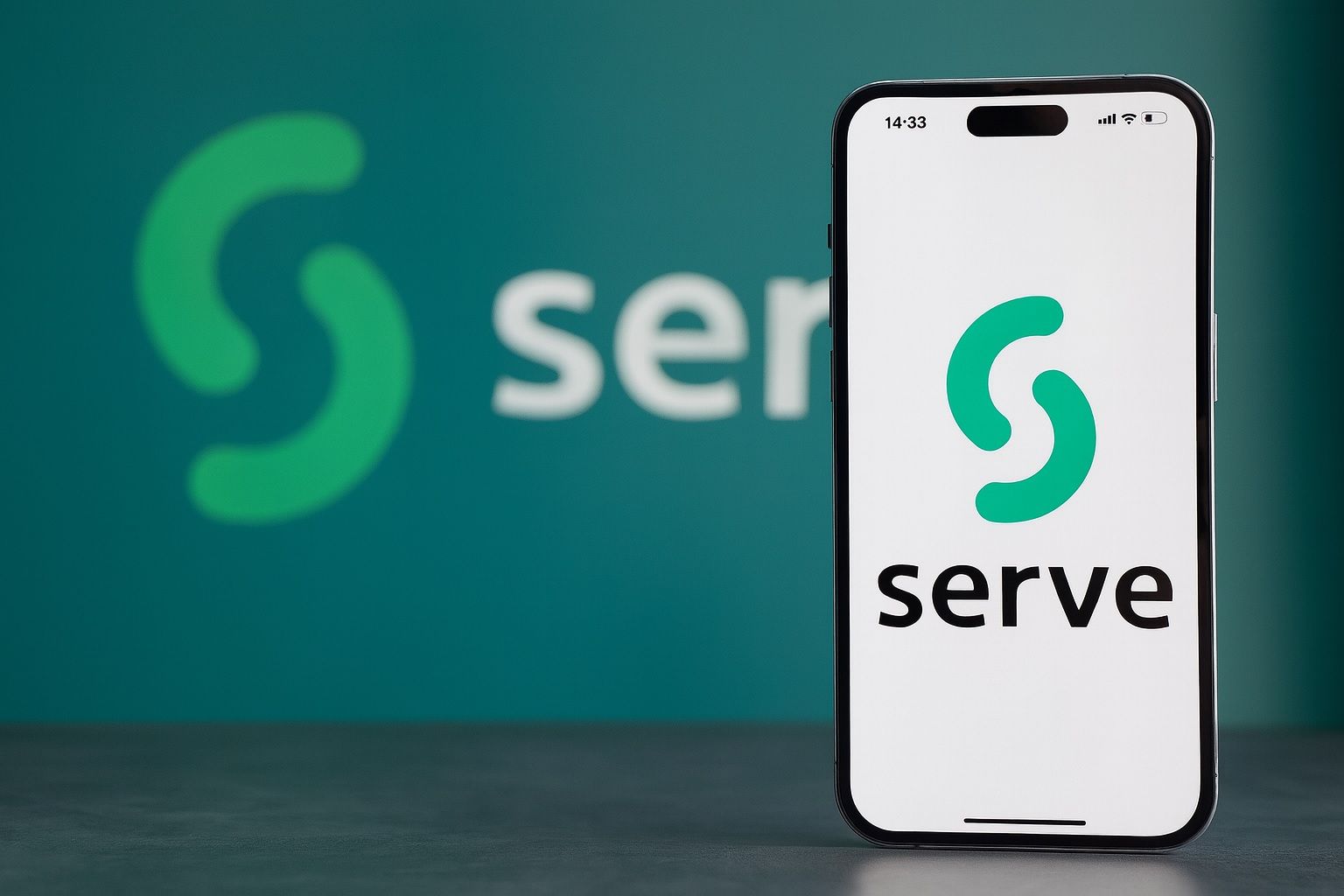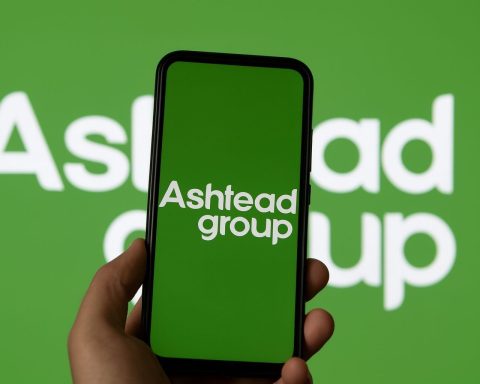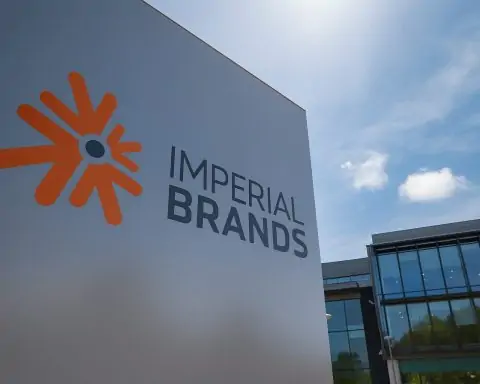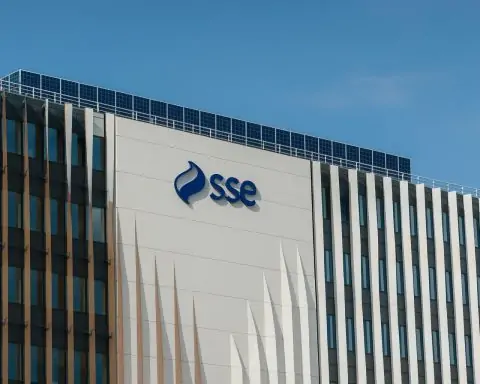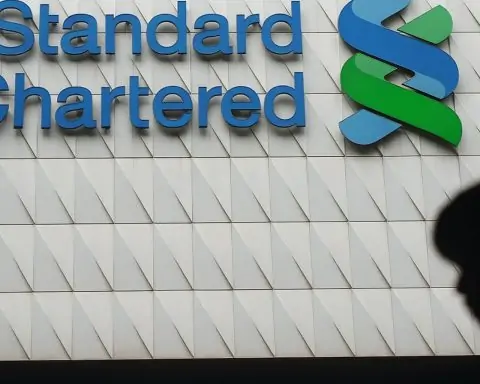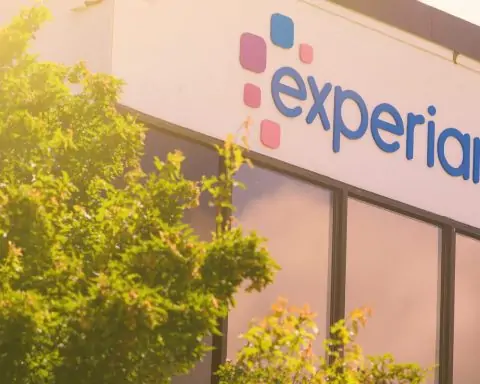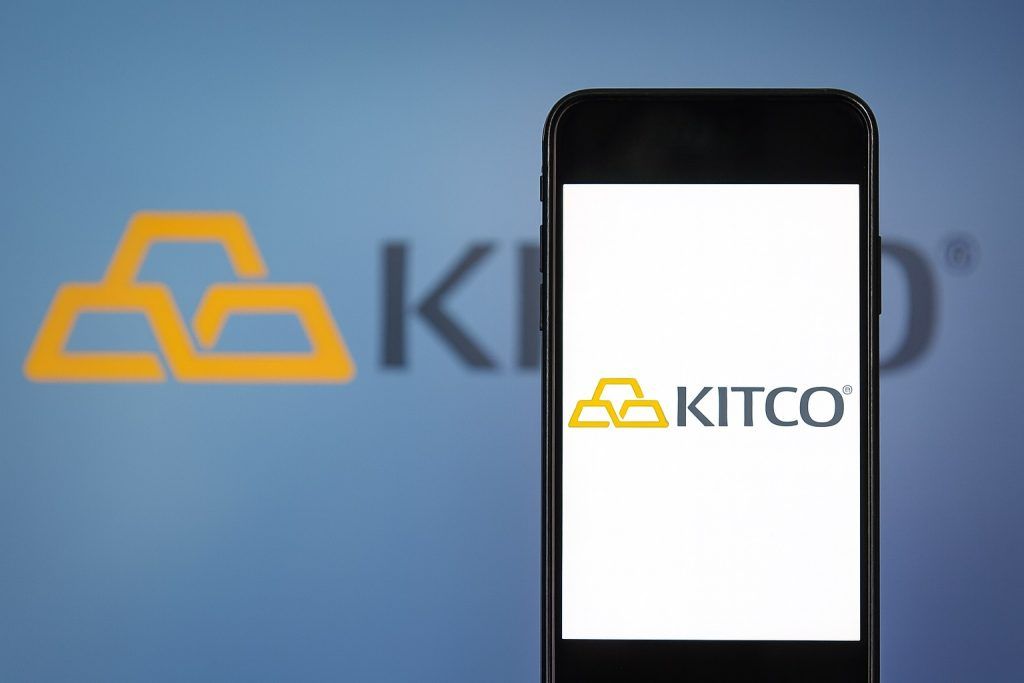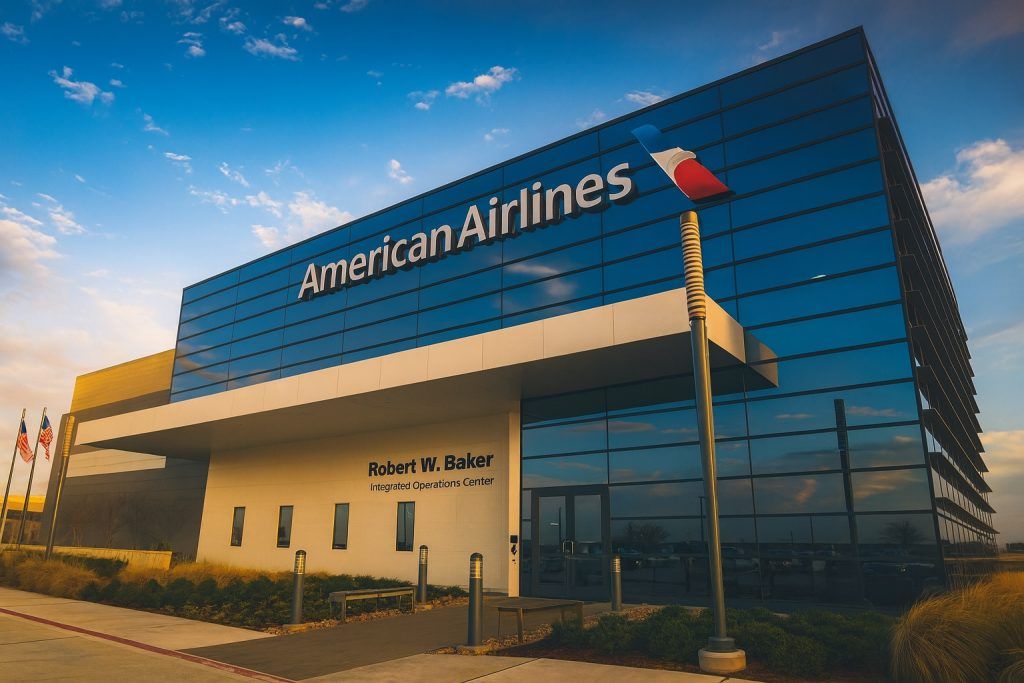- Company Overview: Serve Robotics Inc. is a San Francisco-based developer of autonomous sidewalk delivery robots, originally spun out from Uber’s Postmates division in 2021 [1]. The company operates a fleet of small self-driving robots for last-mile food delivery, in partnership with apps like Uber Eats and 7-Eleven [2].
- Stock & Ticker: Serve Robotics went public via a SPAC reverse merger and uplisted to Nasdaq in April 2024 under the ticker SERV [3]. As of October 9, 2025, SERV trades around $14 per share, giving the company an approximate market capitalization near $800 million [4] [5].
- Recent Price Action: The stock has been highly volatile – climbing over +50% in the past year – and recently jumped ~15% in one day after announcing a major partnership (see Latest News) [6]. Shares have traded between $4.66 and $24.35 over the past 52 weeks [7], reflecting both investor enthusiasm and speculative swings.
- Business Indicators: Serve’s robots have completed 100,000+ deliveries to date across several U.S. cities [8]. As of mid-2025 the company had a fleet of about 400 robots, with plans to scale to ~2,000 robots by end of 2025 to meet surging demand [9]. Despite rapid growth, revenue remains minimal (under ~$2M in 2024) and the company is not yet profitable.
- Partnerships:Uber Eats was Serve’s initial launch partner (starting deliveries in 2021), and Serve has multi-year contracts to deploy robots for Uber in cities like Los Angeles, Miami, Dallas, Atlanta and more [10]. In October 2025, Serve expanded to DoorDash’s platform (details below), marking its first collaboration beyond Uber [11]. The startup has also run pilot programs with 7‑Eleven for autonomous convenience store deliveries [12], and recently partnered with Little Caesars on robot pizza delivery in Los Angeles [13].
Latest News & Developments (October 2025)
Serve Robotics grabbed headlines this week with a major new partnership announcement. On October 9, 2025, the company revealed a deal with DoorDash to deploy Serve’s sidewalk delivery robots for food orders on the DoorDash platform [14]. Initially rolling out in Los Angeles, the pilot means DoorDash customers from select restaurants may have their meals delivered by a Serve robot [15]. This is a strategic expansion beyond Serve’s exclusive relationship with Uber Eats to date. “This partnership enables us to go to cities where DoorDash is the dominant player… we’re looking for more demand, so that every minute of every day, the robots have access to more jobs,” said Serve co-founder and CEO Ali Kashani, highlighting how tapping DoorDash’s vast user base can boost robot utilization [16]. The news was met with investor excitement – SERV stock surged about 15% in trading after the announcement [17], as the market cheered Serve’s access to DoorDash’s enormous network of merchants and customers.
This DoorDash deal comes on the heels of another milestone just days earlier. On October 6, Serve Robotics announced it has deployed its 1,000th autonomous delivery robot, a significant scaling achievement for the young company [18]. In fact, over 380 of those robots were rolled out in September alone as Serve accelerates production [19]. Hitting 1,000 robots put Serve well on track to reach its goal of 2,000 active robots by year-end 2025. The stock jumped over 11% on Oct. 6 following this news [20], indicating investors are closely tracking Serve’s operational progress.
The combination of positive news catalysts – rapid fleet growth and the high-profile DoorDash partnership – has given SERV shares strong momentum in early October. It also underscores the first-mover advantage Serve is trying to cement in the autonomous delivery market. By expanding from one major delivery app (Uber Eats) to two with DoorDash, Serve is widening its reach and revenue opportunities. The company noted that DoorDash is the largest U.S. food delivery platform by volume, so this alliance could significantly increase order flow to Serve’s robots [21]. Executives said they plan to expand the DoorDash service to more markets over time [22], leveraging Serve’s growing robot fleet.
Company Background & Key Milestones
Serve Robotics’ journey began as a moonshot within the food delivery industry. The company was founded in 2017 as the robotics division of Postmates, designing a cute, knee-high robot meant to autonomously ferry food on sidewalks. When Uber acquired Postmates in 2020, the robotics unit was spun off in early 2021 as an independent startup, aptly named Serve Robotics [23]. Uber retained an interest – becoming a key strategic backer – and Uber Eats became Serve’s launch partner, integrating Serve’s rover-like robots for deliveries in Los Angeles. By mid-2021, Serve robots were completing real-world food deliveries in LA and garnering curiosity for their friendly “eye” lights and diligent sidewalk navigation.
Over the next two years, Serve Robotics steadily expanded its footprint and funding. It attracted investments from Uber, NVIDIA, 7-Eleven, and other venture partners, raising tens of millions to develop its technology [24] [25]. Serve also forged manufacturing and R&D relationships – for example, collaborating with auto parts giant Magna International to help design and produce its next-gen robots [26]. By 2022, Serve’s robots had completed tens of thousands of deliveries around Los Angeles and San Francisco, proving the concept’s viability in dense urban environments [27]. The company then began rolling out to new cities: launching in Miami and Austin in 2022, and later in Dallas and Atlanta by mid-2025 [28]. In each city, Serve’s model has been to partner with local merchants via delivery apps (primarily Uber Eats) to cover short delivery routes with its self-driving bots, reducing the need for human couriers or cars for nearby orders.
A pivotal moment came in August 2023, when Serve Robotics announced a go-public transaction. It completed a reverse merger with a publicly listed shell (Patricia Acquisition Corp.), raising $30 million in new financing as part of the deal [29] [30]. This allowed Serve to debut on the OTC market initially. By April 18, 2024, Serve uplisted to the Nasdaq Capital Market, pricing a $40 million public offering at $4.00 per share and adopting the ticker “SERV” [31] [32]. Becoming a public company provided broader access to capital for scaling up – which Serve immediately put to use. The company entered 2024 with grand ambitions: a signed agreement to deploy up to 2,000 robots with Uber Eats across multiple cities, and an aim to expand partnerships beyond food delivery [33].
Since the IPO, Serve Robotics’ stock has experienced a roller-coaster ride. After listing at $4, SERV rocketed to over $24 by mid-2025 – a 6x increase – amid the broader AI stock frenzy and optimism about robotics in delivery. The stock’s surge was fueled by a series of upbeat developments: new city launches (e.g. Chicago in Sept 2025 [34]), glowing media coverage (an Investor’s Business Daily piece highlighted Serve’s top-tier relative strength rating [35]), and Wall Street initiations. In August 2025, Wedbush Securities’ tech analyst Dan Ives began covering Serve with an “Outperform” rating and $15 price target, calling the company a promising play on AI-driven automation [36]. Around the same time, Serve announced it had reached breakthrough milestones like deploying its 1,000th robot (Oct 2025) and completing its 100,000th delivery overall. Each milestone added to the narrative that Serve is turning the long-hyped vision of delivery robots into a fast-growing business reality.
The company has also been active on the M&A front to bolster its technology. In 2023 it acquired a small self-driving startup (Micromobility Labs) to kickstart its Dallas expansion (this was a minor acqui-hire). More significantly, in 2025 Serve made two acquisitions focused on autonomy and remote operation. It bought the assets of Phantom Auto Inc. – a leading teleoperation company – along with Phantom’s Swedish subsidiary Voysys AB, which develops ultra–low latency video streaming for remote control of vehicles [37]. Serve paid about $5.75 million for these assets, gaining tech that enables human teleoperators to remotely assist robots with just ~50 milliseconds of latency [38] [39]. “As we rapidly scale our fleet, Voysys’ technology will be a critical enabler of safe and reliable operations in dense urban environments,” CEO Ali Kashani noted, saying the integration has improved connection quality and cut latency for Serve’s robots [40]. In addition, in mid-2025 Serve acquired Vayu Robotics, a startup specializing in large-scale AI models for robot navigation [41]. The Vayu deal (announced August 2025) brought in cutting-edge “foundation model” AI tech to make Serve’s autonomy smarter and more efficient. According to Northland Capital analyst Michael Latimore, “Serve will integrate Vayu’s models… effectively making its robots smarter and faster… Vayu accelerates Serve’s roadmap, particularly for mobile robotic autonomy”, further enhancing Serve’s leadership in delivery robotics [42].
Technology and Innovation Focus
At its core, Serve Robotics is a technology-driven company at the intersection of robotics and artificial intelligence. Its delivery rovers – currently in their third generation – are packed with sensors and self-driving software to navigate complex city sidewalks. These bots resemble small coolers on wheels, but under the hood they leverage state-of-the-art AI for vision and control. Serve’s Gen-3 robots run on NVIDIA’s Jetson Orin system-on-chip, giving them a 5× boost in computing power over prior models [43]. This upgrade enables advanced onboard processing of camera feeds, LiDAR scans, and GPS data, allowing the robot to interpret its surroundings (pedestrians, bikes, street crossings) in real time without constant remote guidance. The new models also feature improved battery systems – 67% longer battery life – extending their range and operational hours [44]. Impressively, Serve reduced the manufacturing cost of these robots by about 65% compared to earlier versions [45], a crucial factor for scaling up economically. Management has hinted that these cost savings, combined with increasing scale, could eventually pave the way to profitability once deployment is widespread [46].
A distinctive aspect of Serve’s approach is its use of Level 4 autonomy, meaning the robots can drive themselves under defined conditions (specific geofenced areas) without human intervention. However, for safety and redundancy, Serve has implemented a robust teleoperation system. In cases where a robot encounters an unusual obstacle or tricky situation, a remote human operator can take control and guide the robot. This is where Serve’s acquisitions of Phantom Auto/Voysys come in – by owning a best-in-class teleoperation tech stack, Serve can ensure any remote assists are seamless and ultra-fast [47]. Voysys’s streaming platform gives “glass-to-glass” video latency as low as 50ms, essentially real-time, which is critical if an operator needs to quickly steer a robot or resolve an issue from afar [48]. The benefit is twofold: it improves safety (humans can promptly handle edge cases) and reduces operating cost, since a single teleoperator can oversee dozens of robots, intervening only when needed. Serve has already integrated Voysys’ system into its fleet, seeing “considerable improvements in connection reliability” that directly lower data costs and boost performance metrics [49].
Serve’s AI software is also continually learning from the growing trove of delivery data. Every completed delivery – over 100K so far – feeds into improving the robots’ algorithms. The recent Vayu Robotics acquisition turbocharges this by bringing in a “foundation model” approach: using simulation and large-scale training to teach the robots to handle new environments and scenarios virtually before they encounter them in real life [50]. This could accelerate the rollout to new cities and use-cases. Serve even ran an international pilot in Doha, Qatar in 2025 [51], showing the robots can adapt outside U.S. sidewalks, potentially a proof-of-concept for global deployments down the line.
In terms of capability, each Serve robot can carry about 50 pounds of cargo (up to four large pizzas) in its compartment [52]. The bots drive around 5-7 miles per hour (up to 11 km/h) – brisk walking speed – and have a range of ~40–45 miles on a charge [53]. They are designed to obey pedestrian rules: stopping at red lights, using crosswalks, and navigating around people and pets. Serve prides itself on a 99%+ delivery completion rate with essentially zero serious incidents [54]. In fact, one analysis noted the robots boast 99.65% delivery accuracy, meaning they almost never fail to get an order to the right customer – a rate “lower (better) than human drivers,” as the company often touts [55]. This reliability is crucial for gaining public trust and regulatory approval in each city. The robots are equipped with multiple cameras, radar, and often a brightly lit “face” to appear friendly. When a Serve robot arrives at its destination, customers receive a notification and use a code on their phone to unlock the compartment and retrieve their food [56] – a fully contactless handoff.
Looking ahead, Serve is also eyeing new delivery verticals beyond takeout meals. Thanks to the higher payload and modular design of its Gen-3 bots, the company has piloted grocery delivery and small parcel delivery. Serve’s leadership argues that using a 40-lb robot is far more efficient than a 3,000-lb car for a 2-pound burrito or a bag of groceries. “Why would you deliver a 2-pound burrito meal with a 2-ton car?” the team quips [57]. By making local deliveries autonomous, Serve hopes to slash the last-mile delivery costs that squeeze restaurants and retailers – all while reducing traffic and emissions. It’s a bold tech vision, but one that aligns with broader trends in logistics. With its deepening tech stack (AI, teleop, partnerships with hardware makers), Serve aims to stay ahead of emerging competitors in the delivery robotics space.
Market Trends & Competitive Landscape
Serve Robotics sits at the forefront of a nascent but fast-growing sector: autonomous last-mile delivery. Industry analysts estimate the market for last-mile delivery robots could reach $450 billion by 2030 [58], fueled by the continued boom in e-commerce, rising labor costs for couriers, and relentless consumer demand for faster delivery. This massive opportunity has not gone unnoticed – a modern “gold rush” is underway to deploy robots, drones, and self-driving vehicles that can automate local deliveries. Serve is one of the few pure-play public companies in this arena, which partly explains the intense investor interest in its stock. As noted, SERV has traded at extremely rich valuations (40×+ forward sales) because investors are essentially betting on Serve’s potential to dominate a $450B market, not its scant current revenue [59] [60].
Broader robotics and AI trends in 2025 have also been a tailwind. This year saw a frenzy for AI-related stocks, from large-cap leaders like Nvidia to speculative small-caps with an AI angle. Serve, with its AI-powered robots, has benefited from this thematic momentum. In fact, BlackRock (the world’s largest asset manager) took a notable stake in Serve Robotics during Q2 2025, buying ~1.83 million shares (worth ~$25 million) [61] [62]. BlackRock’s global macro head cited AI as a key investment theme and is “sticking with the AI trend” in equities [63]. That vote of confidence from a heavyweight helped legitimize Serve as an “interesting route into the AI world” for institutional investors [64]. It also put Serve in the same basket as other high-growth AI plays that BlackRock believes could deliver 15–20% future earnings growth (justifying high valuations) [65]. In short, Serve has been swept up in the broader narrative that AI + Robotics = the future of many industries, and investors don’t want to miss the next potential breakout leader.
However, the competitive landscape in autonomous delivery is widening quickly. Serve is far from alone in trying to conquer sidewalks and streets with robots:
- Direct rivals (sidewalk robots):Starship Technologies (an Estonian-American startup) is a pioneer in sidewalk delivery bots and has done over 4 million deliveries globally. Starship’s robots operate on college campuses and some cities, posing a competitive threat if it scales in the U.S. Similarly, startups like Kiwibot, Coco, and Cartken have their own delivery rovers being tested by food delivery apps and retailers. Serve will need to leverage its partnerships and tech edge to outpace these peers. Its exclusive partnership with Uber Eats (until now) gave it a leg up in certain markets, but it remains to be seen if Uber might also work with others or if exclusivity holds. The new DoorDash partnership is a big competitive win for Serve, as it beats rivals to that platform (for now).
- Delivery drones: While Serve focuses on the ground, others look to the air. Companies like Alphabet’s Wing and Amazon Prime Air are testing aerial delivery drones that can carry small packages. Drones could eventually bypass many ground logistics (flying from restaurant to home), which is a different model. Regulators have been slower to approve widespread drone delivery in cities, so sidewalk robots might have an easier path in the near term. But as drone tech matures, Serve might face competition from above, especially for lightweight deliveries. Notably, Uber has also piloted food delivery by drone in some locations (in partnership with different providers).
- Larger autonomous vehicles: Tech giants and automakers are eyeing the local delivery market too. Amazon has experimented with its Scout delivery robot and also invests heavily in self-driving vehicles. Alphabet (Google) has a robotics subsidiary and plenty of AI prowess that could be applied to logistics. Even Tesla has hinted at using its self-driving tech for delivery in the future. Meanwhile, autonomous vehicle companies like Nuro have built medium-sized delivery pods that drive on streets (not sidewalks) and have secured deals with FedEx, Domino’s, and others. In China, JD.com (the e-commerce giant) and Meituan are deploying delivery bots and drones at scale [66]. The point is, Serve faces a dynamic environment with both startups and billion-dollar players vying for a slice of the last-mile automation pie [67].
- Robotics stocks momentum: It’s worth noting that Serve’s rise comes amid a broader rally in robotics stocks this year. For example, fellow service robot company Richtech Robotics (NASDAQ: RR) saw its stock skyrocket nearly 800% year-over-year by October 2025 [68] [69], after announcing big deployment deals in retail and hospitality. Such outsized gains reflect both improving fundamentals and speculative fervor in the robotics space [70]. Investors have been pouring into small-cap robot companies on any news of major partnerships, hoping to find the next big winner. This context has undoubtedly helped Serve – as one of the few publicly traded autonomous delivery pure-plays – attract outsized attention. But it also means valuations can swing wildly with sentiment.
On balance, the market trend is clearly in Serve’s favor: delivery apps and retailers are seeking ways to cut costs and solve labor challenges, and robots offer a compelling solution. Major food delivery platforms (Uber, DoorDash, Grubhub) are increasingly open to autonomous pilots, as evidenced by Uber’s embrace of Serve and other bots, and DoorDash now partnering with Serve. There’s a sense that the industry is at a tipping point where robot deliveries could move from novelty to mainstream over the next 2-3 years. In fact, Wall Street consensus models project Serve’s annual sales to surge to ~$35 million in 2026 and ~$71 million by 2027 as its rollout accelerates [71]. If Serve can execute well, it could ride a rising tide that lifts all autonomous delivery boats (or bots, in this case).
Analyst Sentiment and Stock Forecast
Wall Street analysts and experts are starting to take notice of Serve Robotics, though opinions vary given the company’s early-stage nature. Overall, the current analyst consensus leans cautiously optimistic. According to TipRanks, in the past few months three analysts have initiated coverage, yielding 2 “Buy” ratings and 1 “Hold” on SERV – a Moderate Buy consensus. Their average 12-month price target is about $19, implying ~35% upside from the mid-$14 level [72]. Price targets range from a low of ~$15 up to a Street-high of $23 [73], reflecting different views on how quickly Serve can grow and overcome risks.
Several notable analysts have publicly weighed in:
- Dan Ives (Wedbush Securities) – a well-known tech analyst – sees Serve as a promising AI-driven disruptor. In late August 2025, Ives initiated coverage with an Outperform rating and a $15 price target [74]. At the time, $15 represented a ~33% premium to the stock’s trading price [75]. He cited confidence in Serve’s growth potential, stating that its revenue is set to “explode” in coming years as robot deployments ramp up [76]. Ives’ bullish call helped send SERV up ~13% in the days after his note, showing his influence. However, he also acknowledged the competitive nature of last-mile robotics and the need for execution.
- Michael Latimore (Northland Capital) – a 5-star rated analyst – is even more optimistic. After Serve’s tech acquisitions, Latimore reiterated an Outperform (Buy) and set a $23 price target, which implies huge upside of over +60% [77]. He has lauded Serve’s technology stack, especially the Vayu and Voysys additions. “We continue to view Serve as one of the best physical AI investments given their leading technology,” Latimore wrote, arguing that the company’s moves have further solidified its advantage [78]. In his view, making the robots smarter and faster with advanced AI/teleop should help Serve capture a big chunk of the market. His target assumes Serve can execute near flawlessly and face limited pricing pressure.
- Cantor Fitzgerald – In mid-September 2025, Cantor’s team reaffirmed an “Overweight” rating with a $17 price target for SERV [79]. This came right after Serve’s acquisition of the teleoperation tech (Phantom/Voysys). Cantor’s note highlighted that the deal “strengthens Serve’s technology stack for deploying autonomous delivery robots” and improves its ability to scale safely [80]. They also cited impressive operating metrics: as of Q2 2025 Serve had 400 robots deployed and 100K+ deliveries completed, with plans to triple the fleet by Q3 and hit ~2,000 robots by year-end [81]. Those figures underscored why Cantor remained bullish. That said, Cantor’s analysts also cautioned that other AI stocks might offer greater near-term upside with less risk, framing Serve as a higher-risk, high-reward pick in their coverage [82].
- The Motley Fool has published a few analyses on Serve, striking a more balanced tone. One October 2025 Fool article bluntly asked: “Is Serve Robotics stock a buy?” and pointed out some sobering financial realities. Serve lost about $39 million in 2024 and was on track to lose ~$68 million in 2025, given it had already lost $34M in the first half [83]. Meanwhile, revenue for full-year 2025 might only reach ~$2.2 million, well below Wall Street’s $3.7M forecast [84]. The analysis noted that Serve isn’t expected to turn an annual profit until around 2031, by which time it would need ~$340 million in annual sales [85]. That long runway to profitability is a key investor consideration. The Fool’s take was that while Serve has exciting growth, it’s a speculative play and investors must be patient (the article even hinted that the Fool’s own premium picks did not include Serve at the moment [86]). Essentially, not everyone is convinced that Serve’s stock is a near-term winner, even if the technology and vision are compelling.
Pulling back, the investment thesis for Serve Robotics stock hinges on future execution. Bulls argue that if Serve can indeed scale to thousands of robots, ink more partnerships, and capture even a single-digit share of that $450B delivery automation market, the company’s revenues could go from near-zero to hundreds of millions in a few years – potentially justifying today’s valuation. They point to the “land grab” nature of the market: early leaders like Serve could entrench themselves with data and operational know-how that make it hard for latecomers to catch up. As one investment writer put it, “Serve’s first-mover advantage and tech leadership make it a compelling long-term play… for those willing to bet on exponential growth in autonomous delivery” [87] [88]. The recent big-name endorsements (BlackRock’s stake, partnerships with Uber and DoorDash, Nvidia’s backing) add credibility to the bull case that Serve might emerge as the category leader in sidewalk robotics.
On the other hand, bears and skeptics highlight the execution risks and lofty valuation. At ~$14/share, SERV was trading around 40–50× its 2025 sales – a multiple that assumes enormous growth ahead [89]. Any hiccups – be it slower deployments, tech failures, or revenue shortfalls – could cause a sharp correction. We’ve already seen the stock pull back from its highs as reality checks set in. Moreover, as discussed below, the company will likely need to raise more capital (diluting shareholders) to fund its aggressive expansion until it can generate positive cash flow. Thus, analysts generally recommend SERV only for investors with a higher risk tolerance. It’s a classic “story stock”: the story is exciting (robots on every corner!), but the ending is far from certain.
Risks, Challenges, and Investor Considerations
Despite all the promise, Serve Robotics faces a range of risks and challenges that investors should weigh:
- Regulatory and Public Acceptance: Deploying autonomous robots in public spaces involves navigating complex local regulations and community reactions. Different cities and states have varying laws on sidewalk robots – some have outright bans or strict pilot programs, others allow them with certain weight/speed limits. Serve must effectively lobby and comply with each locale’s rules, which can be a time-consuming process. Regulatory hurdles like safety standards, permitting, and data privacy requirements “could delay deployments” or restrict where robots can operate [90]. Furthermore, any high-profile accident (e.g. a robot hitting a pedestrian or causing a traffic incident) could spark public backlash and stricter oversight. To date Serve’s record is very good, but the more robots it puts out, the higher the chance of an incident. The company will need to continue working closely with city officials to ensure its robots are seen as safe and beneficial. Community outreach (making robots appear friendly, addressing disability access concerns, etc.) is also key to avoiding a public relations nightmare that could stifle adoption.
- Intense Competition: As outlined earlier, the competitive field is crowded – and includes some deep-pocketed players. There is no guarantee that Serve will achieve a dominant market share. A larger tech or retail company could decide to build or buy a competitor and scale it quickly. For instance, if Amazon or Google threw their weight behind their own delivery robot initiatives, it could overshadow Serve’s resources. Serve’s partnership strategy (with Uber, DoorDash, etc.) suggests it is trying to entrench itself with key platforms before rivals do. But competition could put downward pressure on deployment contracts and margins. If Uber or DoorDash decided to allow multiple robot vendors, for example, Serve might have to fight on pricing or revenue share, which could hurt its economics. Also, international markets might be led by local incumbents (e.g. Alibaba/Meituan in China). Serve will have to execute nearly flawlessly and keep innovating to maintain any lead – a big ask for a small company.
- Cash Burn and Dilution: As a pre-profit company with heavy R&D and operational costs, Serve Robotics is burning cash and will likely need additional funding. The company lost ~$34M in the first half of 2025 alone [91] and is investing in manufacturing more robots, hiring, and expansion. While it had around $40M from its IPO and possibly additional funds from warrant exercises, that war chest can deplete quickly at the current burn rate. Unless Serve’s robots start generating much higher revenue soon (which depends on volume of deliveries and contract terms), the company may have to issue new equity or debt by 2026 to finance growth. New equity financings could dilute existing shareholders – a common risk with startups. Investors should watch Serve’s cash runway and margins closely. The good news is that Serve’s current balance sheet appears debt-light and the company has a high current ratio [92], but that can change. Also, any capital raise at lower share prices would be less favorable; thus the volatility of SERV stock can itself influence the ease of financing growth.
- Unproven Unit Economics: One big question mark is whether Serve’s unit economics will ultimately make sense. Each robot has a certain cost to build, deploy, and maintain (including retrieval, charging, cleaning, etc.). Serve likely charges partners per delivery or via service fees. Right now, with low volume, the cost per delivery is undoubtedly high (hence the huge losses). The company claims costs will plummet once robots are at scale and utilized constantly – and that the Gen-3 robots’ cheaper production costs help a lot [93]. But until we see evidence, there’s a risk that the economics don’t pan out as hoped. For instance, if robots require frequent human intervention or have high maintenance needs, the cost savings vs. human couriers could erode. Additionally, cities might impose fees for robot operation on public sidewalks in the future (as they do with rideshare and delivery services), which could impact margins. Simply put, the profitability of a robot delivery network remains theoretical at this stage, and investors have to trust the company’s projections.
- Technical and Operational hurdles: Developing autonomous robots is hard. While AI has advanced, urban environments are notoriously unpredictable. Serve’s robots might struggle with heavy rain, snow, or hilly terrain (hence why deployments have been in Sun Belt cities so far). Expanding to cities like New York or Seattle could bring new technical challenges. There’s also the challenge of scaling manufacturing – producing hundreds or thousands of robots efficiently. Serve’s partnership with a manufacturer like Magna can help, but ramping production always carries risk (supply chain delays, quality control issues, etc.). Moreover, managing a fleet of thousands of robots across cities will test Serve’s operational capabilities. Things like robot retrieval/recharging logistics, customer support (for when a robot is delayed or an order goes wrong), and hardware reliability will all need robust processes. Any snafu in operations at scale could lead to unhappy partners or customers. In essence, Serve has to transition from a scrappy tech startup to a sophisticated operations company as it grows, a shift that has tripped up many young tech firms.
- Macro and Market Sentiment: Lastly, broader market conditions pose a risk. Serve’s valuation is predicated on growth and future potential, which makes it sensitive to interest rates and risk appetite. If inflation or rates rise further, high-multiple speculative stocks like SERV often see selling pressure as investors move to safer assets. We’ve seen some of this in 2025 as the Fed’s policies evolved – AI/tech stocks have been volatile. Additionally, any cooling of the “AI hype” could deflate valuations across the board. Serve will need to show tangible progress (revenue growth, key deals) to support its stock price if sentiment turns. Otherwise, it could be in for steep declines as many hype-cycle stocks experience. On the flip side, if Serve executes well during a tougher market, that could actually set it apart as a more durable growth story.
In sum, Serve Robotics offers an enticing vision of robots delivering lattes and tacos on every corner, and it has made impressive strides toward that vision. The stock’s dramatic rise and recent pullbacks illustrate the tug-of-war between fear of missing out on a revolutionary trend and fear of overpaying for a company with significant uncertainties. Potential investors should keep both the upside and risks in clear view. As one analysis framed it: Serve is a “high risk, high reward” bet on the future of delivery [94] [95]. Those bullish on the company see a first mover in a huge market whose early partnerships and tech could cement a leadership position – the prize of capturing part of a $450B logistics revolution “is worth the gamble for aggressive growth investors,” according to that analysis [96] [97]. But skeptics will note that many things have to go right for Serve to justify the hype, and plenty could go wrong.
Bottom Line: Serve Robotics has positioned itself as a pioneer of autonomous delivery, with recent deals (like the DoorDash partnership) validating its approach and unlocking new growth. The company is riding powerful trends in AI and automation, and if it maintains its technological edge, it could transform last-mile logistics and reward shareholders over the long term. However, investing in SERV today requires a long-term horizon and a strong stomach for volatility. This is an early-stage, unprofitable venture in an emerging industry – essentially a moonshot on robots becoming a common sight on city sidewalks. For investors intrigued by the concept, keeping an eye on upcoming milestones (such as Serve’s Q3 2025 earnings on Nov 5, 2025, further partnership announcements, or progress toward that 2,000-robot goal) will be crucial in gauging whether Serve Robotics is steadily delivering on its promise or encountering roadblocks on the way to the autonomous delivery future.
Sources: Serve Robotics Press Releases and Investor Materials; Reuters; GlobeNewswire; Investing.com [98] [99]; The Motley Fool [100] [101]; InsiderMonkey [102] [103]; TipRanks [104] [105]; ts2.tech (Tech and AI Stock Analysis) [106] [107]; aInvest [108] [109]; Finviz [110].
References
1. finviz.com, 2. finviz.com, 3. www.prnewswire.com, 4. www.investing.com, 5. finviz.com, 6. www.investing.com, 7. www.investing.com, 8. www.investing.com, 9. finviz.com, 10. ts2.tech, 11. www.investing.com, 12. finviz.com, 13. www.tipranks.com, 14. www.investing.com, 15. www.investing.com, 16. www.investing.com, 17. www.investing.com, 18. finviz.com, 19. finviz.com, 20. finviz.com, 21. www.investing.com, 22. www.investing.com, 23. finviz.com, 24. www.serverobotics.com, 25. www.serverobotics.com, 26. www.ainvest.com, 27. finviz.com, 28. ts2.tech, 29. www.serverobotics.com, 30. www.serverobotics.com, 31. investors.serverobotics.com, 32. www.prnewswire.com, 33. finviz.com, 34. finviz.com, 35. finviz.com, 36. www.nasdaq.com, 37. finviz.com, 38. finviz.com, 39. finviz.com, 40. finviz.com, 41. www.tipranks.com, 42. www.tipranks.com, 43. www.ainvest.com, 44. www.ainvest.com, 45. www.ainvest.com, 46. www.ainvest.com, 47. finviz.com, 48. finviz.com, 49. finviz.com, 50. www.tipranks.com, 51. www.tipranks.com, 52. www.tipranks.com, 53. www.tipranks.com, 54. www.ainvest.com, 55. www.ainvest.com, 56. www.tipranks.com, 57. www.tipranks.com, 58. www.ainvest.com, 59. www.ainvest.com, 60. www.ainvest.com, 61. www.tipranks.com, 62. www.tipranks.com, 63. www.tipranks.com, 64. www.tipranks.com, 65. www.tipranks.com, 66. www.ainvest.com, 67. www.ainvest.com, 68. ts2.tech, 69. ts2.tech, 70. ts2.tech, 71. www.nasdaq.com, 72. www.tipranks.com, 73. www.tipranks.com, 74. www.nasdaq.com, 75. www.nasdaq.com, 76. www.nasdaq.com, 77. www.tipranks.com, 78. www.tipranks.com, 79. finviz.com, 80. finviz.com, 81. finviz.com, 82. finviz.com, 83. finviz.com, 84. finviz.com, 85. finviz.com, 86. finviz.com, 87. www.ainvest.com, 88. www.ainvest.com, 89. www.ainvest.com, 90. www.ainvest.com, 91. finviz.com, 92. finviz.com, 93. www.ainvest.com, 94. www.ainvest.com, 95. www.ainvest.com, 96. www.ainvest.com, 97. www.ainvest.com, 98. www.investing.com, 99. www.investing.com, 100. finviz.com, 101. finviz.com, 102. finviz.com, 103. finviz.com, 104. www.tipranks.com, 105. www.tipranks.com, 106. ts2.tech, 107. www.ainvest.com, 108. www.ainvest.com, 109. www.ainvest.com, 110. finviz.com
